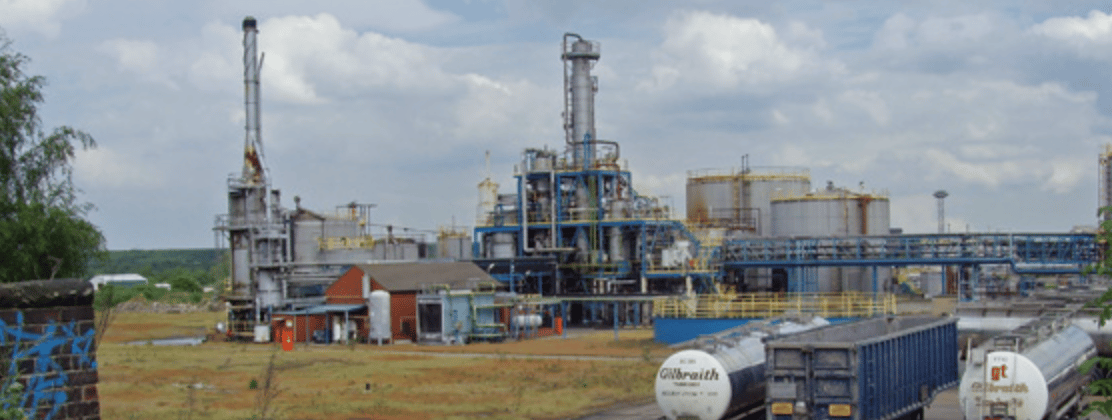- The Column
- Posts
- 🏭 A billion for everyone
🏭 A billion for everyone
The US DOE and DAC, Aurora’s plant shut down, and golf balls.
TOGETHER WITH
Good morning. Looks like the funding is starting to roll in for DAC. If you have an opinion, don’t be afraid to share it with me!
From the condenser:
· The US DOE and DAC
· Aurora’s plant shut down
· POTD: golf balls

Two DAC hubs just got funded
The US Department of Energy (DOE) selected two separate direct air capture (DAC) and sequestration projects, one in Lake Charles, Louisiana and one in Corpus Christi, Texas and plans to fund them with $1.2 billion.
A little context:
The Inflation Reduction Act drastically increased the amount of funding that the DOE can allocate (by roughly 10x) to sustainability-related projects, which has already led to a spike in construction activity. Of the $369 billion that needs to be allocated by 2030, $3.5 billion of it was set aside for regional DAC hubs, and these two projects will be the first to see some of that cash.
So, what’s the deal here?
The project in Lake Charles will be a collaboration between Climeworks (who has been in this DAC game for a while) and Heirloom (a newer contender), and the project in Corpus Christi will be led by 1PointFive (who we just talked about last week). Apparently the two projects will split the funds, and $100 million has already been lined out to fund 19 separate feasibility and front end engineering studies.
Zooming out:
Sure, the low concentration of CO2 in air (roughly 0.04%) implies that more energy (aka money) will be required to do the separation than if you chose to do the separation at an emissions source (which contain 10-60% CO2). And sure, there is no market for sequestration. But DAC is being funded, and since it is, we should probably start to think about whether there are any self sustaining businesses that can be built upon its government-funded back.
SPONSORED
Meet your low carbon market research tool
If you’ve ever sifted through an earnings presentation or transcript, you know how time consuming it can be to extract the meaningful data. And if you’ve ever needed to keep tabs on an entire industry, or do deep market research, then you know how it can quickly become an impossible task.
With Betamark, you can easily search through earnings presentations and calls from the Energy, Mining, Chemicals, and Materials sectors, and get the data you need at a glance—even pricing data for commodities and carbon!

A permanent pyridine plant shutdown
Indianapolis-based specialty chemical producer, Aurorium, announced plans to close its pyridines plant in Indianapolis by October.
Some context:
You probably haven’t heard of Aurorium, but the company has been around (in one way or another) for quite some time. Peter Celestine Reilly transformed a small coal tar distillery business into the Reilly Tar & Chemical Company, and then invented a way to produce pyridine synthetically in the late 1940s. The Reilly family eventually sold the company in 2005 to a private equity firm, who merged it with Rutherford Chemicals in 2006 to form Vertellus. Since then Vertellus has changed PE hands a couple of times, and recently changed its name to Aurorium after acquiring Centauri earlier this year.
So, a plant closure?
The plant being closed produces some 40,000 tons per year of pyridine and picolines (methyl-substituted pyridines), and is both a) the largest plant of its kind in the world, and b) the only one of its kind in the western hemisphere. Closing it is a big deal, but it shouldn’t come as a surprise—despite the pretty picture painted in the paragraph above, the reality is that this site was a pretty rough one. Apparently the groundwater is still contaminated by benzene, pyridines, and ammonia, and is actively monitored by the EPA.
Bigger picture:
The world doesn’t consume copious amounts of pyridines and picolines, but chemicals like 2-vinylpyridine, 3-aminopyridine, and 3,5-lutidine are precursors to pharmaceuticals, and even things like zinc pyrithione (the active ingredient in dandruff shampoo) trace their roots back to pyridines. Ultimately the plant shut down just boils down to a simple fact: it’s cheaper and easier to produce these chemicals in China (because they a processing a lot of coal and because there are less regulations).
Some more headlines
Semiconductor industry is pushing back against the EPA's PFAS proposal
ICL broke ground on the first lithium iron phosphate plant in the US
Samsung and Syrah Resources are discussing graphite deals for batteries
Origin Materials announced some changes to their near term strategy
Mitsui, Microwave Chemical, and Chiyoda are working on electric cracking
Product of The Day
Today, we're breaking down golf balls.

Anyone who has bounced a golf ball on concrete has wondered what's going on inside these things. As seen in the photo, if you cut them open you'll find that they have layers (just like ogres!).
In today's day and age, the center of the ball is usually a hard core made of a butadiene rubber, surrounded by a crosslinked copolymer consisting of ethylene and a small amount of vinyl acid groups (called an ionomer), and coated by a polyurethane. Next time you think about golf try to remember that it's companies like Lanxess making the rubber, DuPont making the ionomer, and PPG making the coating (that's not a knock on ball manufacturing, just a nod to the molecule makers). If you're still interested give this C&EN article a read.
The reboiler
Safety Moment: Leverage this flowchart to help with logically identifying chemical reactivity hazards.
Article: Oleochemicals are making a comeback because of the sustainability push. Give this a read if you want some context.
The bottoms

Want to discuss this stuff with other readers? Join the Discord.
Interested in working for a startup? Join the talent pool.
Looking for older editions? Read the archive.
Curious about more than just news? Subscribe to Feedstockland.


Reply